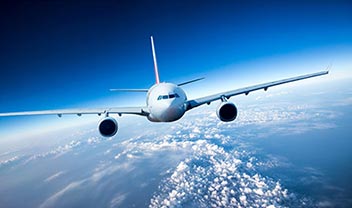Germ and Human Mettle
Travel and tourism is a palpable element in living a worthy life. Evidently, with the pandemic, it has been jeopardized to its breadth and depth.
With an industry worth more than $ 9.25 trillion, the splinters create a plethora of whammies – stagflation, trade wars, geo-political embargoes, ecological and environmental disturbances, fear psychosis, technology failures and beyond everything else, the hierarchy of need, want, purchasing ability.
Our social genes reassure us that living a diabolical life is not a solution, but coexistence, circumvention are. Our lives are gradually adopting the new normal. Businesses are endeavoring to re-open, medical science is striving to create a vaccine, and people are trying to be back to ‘office’. And so is their intent to travel germinating. A recent find from Pinterest suggests that people are again searching for travel inspiration, even more than the same time last year.
In this article, we will look at how the travel and tourism ecosystem, as we understand, will evolve.
Holistically, there is a lot of ground to cover
While there is no clear definition of what comes under the umbrella of travel and tourism, the prime agents are:
- Airlines
- Airports
- Hotels & Resorts
- Vacation rentals
- Restaurants
- Cruise companies
- Car rental companies
- Railways
- Buses
- MICE operators
- Activities
- Retail companies
Interestingly enough, their business models or operations do not run in silos today. It is a complex mesh of underlying synergies, disparities and to a good extent, that of cannibalization. Having said that, the way future unfurls for each of these industries, is a function of travel intents. Let us see how for each of the most prominent travel intents, the industry will respond in the imminent future.
Intent 1: Country roads, take me home…..
This segment of travellers will evolve as local or near location experience buyers. With airlines newly operating to lesser travelled destinations and tier 3 cities/towns, premium hotels and resorts providing hefty discounts, we will see the intrepid traveller club being energized. With respect to local travel at the destination, it will be skewed towards either car rental services or organized taxi operators with increased reinstatement of safety and personal hygiene.
When it comes to the F&B subdomain, in-house restaurants at hotels will see some positive vibes, along with QSRs making a big come back. Otherwise, the F&B sector will continue with this slump for some time as food adventure takes a back seat now.
Local experiences and outdoor visits will gather steam, whereas activities (like theme parks, games, theatres etc.) will continue in this lull. In gist, sustainability will be the mantra, and customer confidence building the steam to drive.
In the midst of all these, retail players will still have their proliferation – whether it’s digital retail or brick and mortar stores. With local experiences being the first choice, travellers will be somewhat skeptical with products and services available there. Hence digital retail, as we visualize, will thrive.
Intent 2: Swaying to the tunes of the oceans and seas
We don’t really see the big-ticket cruise industry picking up anytime soon. When we are barely on the brink of a recession, these are extravagantly indulgent. Very clearly, this industry has been for select few – only about 8% of the US population ever go on a cruise in a lifetime. Now, when the going is tough, we are apprehensive that travellers will splurge on luxury, laid back vacations.
What is important to understand is that the cruise industry acts as a feeder to multiple other travel and tourism agents. Airlines and airports for getting back home, hotels & resorts in case of a multi-location cruise, car rental agencies, trams, trains and buses for local travel, F&B for local dining experiences, activities at destinations or hops, local retails and everyone else under the sun. Concomitantly, they will all be hurt from this channel revenue fading away.
Intent 3: Work is worship, the workplace is a shrine
Zoom, Hangout, WebEx, GoTo Meetings are ubiquitous now. And we opine this will be the future of remote working. Well, but, we only partially agree to it. Plant engineers cannot work on digital twins for operations, lawyers can’t fight every case from a couch, telemedicine has only a narrow scope, and the list continues. There is proof beyond doubt that business travel will have to resume, with ambidextrous values of work and leisure.
However, as we visualize, airlines will have fewer business class seats to sell (thanks to restrictions on corporate spend) and might re-configure the way plane seats are laid out today. Air ticket prices will drop to lure more customers, may be with a re-designed loyalty program that earns you lesser points that what you gain today. You see, effectively the entire top line and bottom line strategies will change.
What happens to the allied industries of hotels, F&B, car rentals, MICE are natural corollaries.
Our best guess is, it might take 3-4 quarters for it to return to stability and predictability and in a reduced capacity, the whole ecosystem will spring back to life.
Intent 4: Two’s company, Three’s a crowd
ITB Berlin, Japan Expo, NAB Show, Indian IPL, Facebook F8, Wimbledon are only handful that have been scrapped or postponed. There are shiploads more. The tune of the economic impact of this is not limited to the travel and tourism industry, but to the balance sheets of nations and states. And as we envisage, 2-3 years is an optimist’s approach of guessing when normalcy would return for the MICE sector. But read it twice; this will also impact airlines, airports, hotels, F&B, retail, car rental, trains and buses, tours and activities, nature parks and every other player you could think of.
What we see could happen are:
a Smaller and medium-sized local players who have been arranging local events, meetings etc. will emerge as a stronger sub-segment. Across cities, towns and suburbs, they would form own chains and snowball.
b. Webinars will increase in numbers – paid or free
c. Local and franchised hotels will offer conferencing capabilities on a wider scale
Intent 5: Union of two or more
This branch could be split into many – people travelling for personal and social reunions and commitments, students who study in universities abroad and their parents, participants in themed marriages, religious congregations, and many more. Most of these will be brushed off, leaving tiny specs alone. These again will take time to recover. There will be a need to monitor demand patterns for these segments. Disposable incomes need to increase, countries need to free up their borders, the number of students flocking universities need to increase and other social prominences have to re-emerge.
Till then, it is a game of watching the bait.
Can technology find an answer to this uplift?
There are a couple of very crucial pieces in the maze that only technology will be able to solve.
1. Designing one trip – We have said this before. This industry is holistic in nature, no salt added. With a design thinking approach, we need to create the real vision of one trip for customers that include all providers and their services. This not alone offers an advantage for customers, but is also the vehicle to understand what data does not tell. Data, at the moment, is not the fuel as it does not exist for such unprecedented times. It can only corroborate.
2. Track and trace – Track customer personas, their non-classical journeys, spending patterns, location preferences, intents and trip activities, active and passive feedback. This is the only way to understand demand and design supply at the moment. And create and train new algorithms. Period.
3. Jack up bandwidth – Tons of things are being done virtually. Obviously, the need for scaled -up systems and infrastructure is needed. It is something that states, policymakers, service providers and travel players all have to work in tandem on. Cloud infrastructure, with its scalability, will become the obvious choice for many.
4. Fire behind the wall – Cyber security will have to become rock solid. With increased online syndication happening, new payment methods being introduced, sensitivity of information being shared (that were never shared before), unscrupulous activities will also increase. And it is natural that we need to protect the ecosystem.
The last note
A huge section of society will not travel again. In recent years, the industry was experiencing a new segment – mature travellers. Some of them had saved for a lifetime for a cruise may be or for a safari in Africa. This new-found liberation will die.
Consultants who prided in living in airplanes will find a new liberation in Workation, being able to spend some time with family and friends.
Intrepid travellers will find a noble way of channelizing their energy in may be creating rich media content, sharing more experiences that would enthuse people to travel.
Sustainability is the only way to get rid of this pandemic’s fear. Till a vaccine is invented, we will have to keep on close syndication amongst ourselves to create value for travel and to ensure we are safe, to return from the lull.
About the author
Sudipto Ghosh is an Associate Director at TCG Digital Solutions Pvt. Ltd. and oversees digital projects for airline/airport clients. He comes with 14+ years of business consulting experience with key airlines and travel solution providers across the globe. As part of his role across multiple organizations and clients, he has led large digital transformation projects, pre-sales and converted multi-million dollar deals with key stress on transformation, business-IT alignment, systems rationalization, PSS, ecommerce, multi modal transportation.
Sudipto holds a Post Graduate Diploma in International Business (Gold Medalist) from Indian Institute of Foreign Trade and an engineering graduate degree in Information Technology (Gold Medalist).













